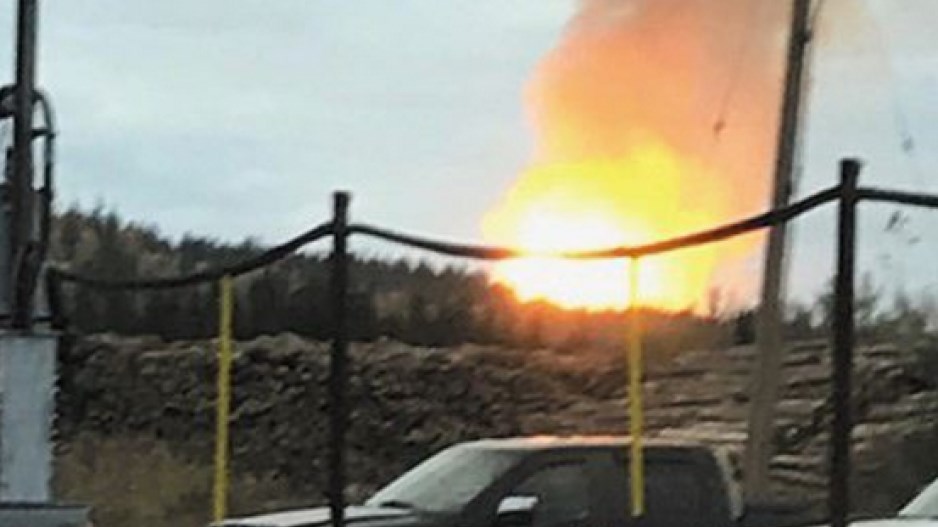Stress corrosion cracking in an Enbridge Westcoast Energy pipeline resulted in a natural gas fireball near Prince George and led to area evacuations of 125 people Oct. 9, 2018, Canada’s National Transportation Safety Board (TSB) has found.
"I just heard it at the start," witness Terry Teegee told the Prince George Citizen at the time. "I thought it might have been a jet engine or a low-flying jet. And the next thing that came to mind is that maybe it's a train but that's way too loud.
"But then, as soon as I looked outside, I saw a massive fireball about a half a kilometre to a kilometre away behind the community.”
The board found the corrosion cracks on the 36-inch pipe’s exterior led to polyethylene tape coating applied to the pipe as a measure to protect from corrosion deteriorated over time.
“This allowed soil moisture to come into contact with the pipe surface, leading to corrosion and cracking,” the board said. “Growing and merging over time, the cracks reduced the load-bearing capacity of the pipeline at normal operating pressures.
Deficiencies in predicting the extent of cracking and a deferred inspection led to a hazard being undetected prior to the pipeline rupture 13 kilometres northeast of Prince George, the board said.
“We know this incident has caused concerns and disrupted the lives of many people in the area. For that, we apologize,” said Enbridge senior vice-president and chief operations officer for gas transmission Michele Harradence. “We commit that we have learned from this incident and have taken steps to ensure the safety of our natural gas system.”
In the wake of the explosion, the company said it has completed a comprehensive pipeline integrity program on its B.C. natural gas pipeline system to prevent similar incidents from occurring and to significantly improve pipeline safety.
“This is the most aggressive integrity program ever undertaken by Enbridge on its pipeline system in B.C.,” the company said. “It’s part of a new approach to pipeline safety and an ongoing commitment to continually improve the safety of our natural gas pipeline system.”
The board also found not all nearby communities and pipeline operators had been involved in periodic emergency response exercises in the four years prior to the explosion.
“If pipeline emergency response exercises are not conducted periodically with all potentially affected stakeholders, gaps in emergency response plans may not be identified, thereby increasing the risk that all parties will not be sufficiently prepared to respond to a pipeline emergency,” the board said.
The Westcoast pipeline is adjacent to another Westcoast gas pipeline and a Pembina Pipeline Corporation oil pipeline, a June 2019 board letter to Westcoast said.
The letter suggested the company review its stress corrosion cracking management practices, including inspection intervals, to mitigate the risks associated with polyethylene tape-coated pipe.
In response, the board said, Westcoast revised several aspects of its inspection practices and integrity management program for this pipeline.
The TSB said The National Energy Board (now The Canada Energy Regulator -CER) restricted operating pressures until it approved the engineering assessments submitted by Westcoast to ensure safe operation of the relevant segments of the pipeline.
B.C.’s Oil and Gas Commission and the CER in February cautioned pipeline operators about weld failures that could lead to oil or gas spills.
@jhainswo




